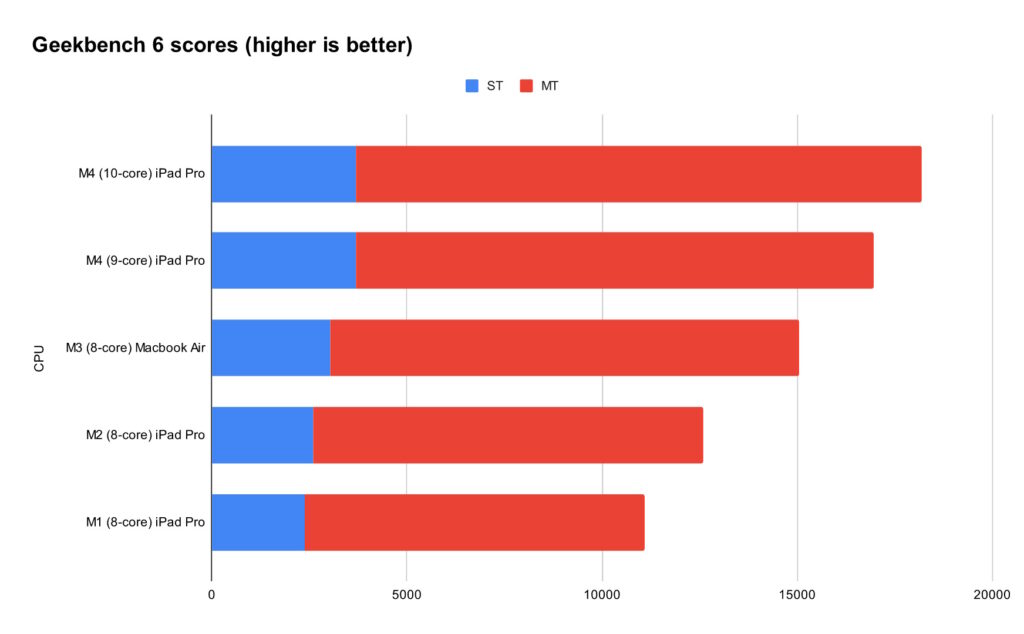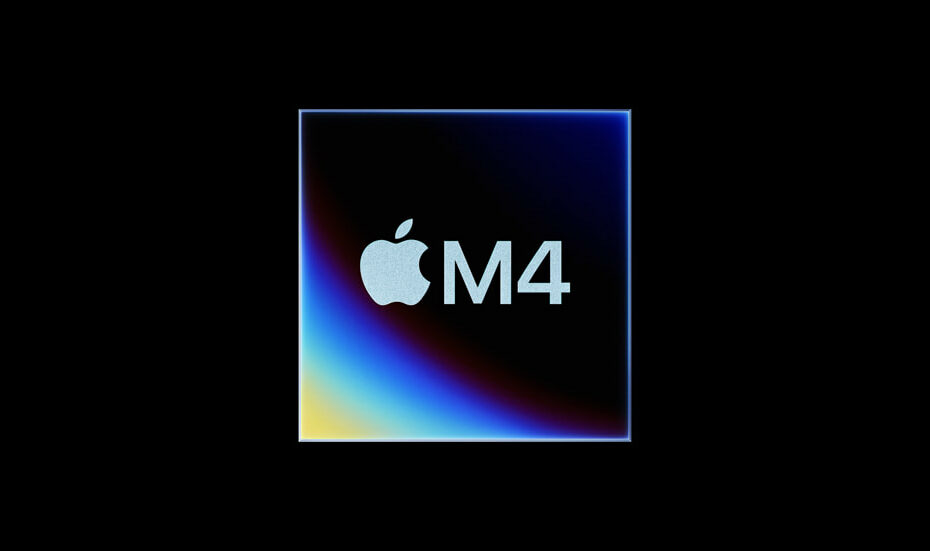A couple of weeks ago, Apple announced its new M4 processor. Interestingly, this advanced piece of technology is being used in an iPad Pro rather than appearing in a MacBook, MacBook Air, or similar devices. I don’t want to simply repeat the information provided in Apple’s presentation. Instead, I want to dig deeper into the details of this processor. If you want to know more, please read on.
Key Features of the M4 Processor
Let’s delve into some highlights of the CPU component of the new M4 processor. The M4 has up to 10 cores, which includes up to four performance cores and six efficiency cores. This is an upgrade from the M3, which had a 4+4 configuration. The M4 features next-generation core improvements, including enhanced branch prediction with wider decode and execution for the performance cores and a deeper execution engine for the efficiency cores.
Both types of cores also feature enhanced next-generation ML (machine learning) accelerators, which is a critical point we’ll explore further.
Up To 10 Core
Apple presented the M4 as having four performance cores with improved branch prediction and six efficiency cores, totaling ten cores. However, it’s important to note that “up to 10 cores” does not guarantee a 10-core CPU. In fact, some iPad Pro models ship with a nine-core CPU instead.
Both the nine-core and 10-core variants boast a boosted clock speed of 4.4 GHz and are built using TSMC’s second-generation 3-nanometer process node. When examining the specifications, it’s clear that the nine-core version includes three performance cores and six efficiency cores, available in configurations with 256 GB or 512 GB of storage and 8 GB of RAM. In contrast, the 10-core version requires 1 TB of storage and 16 GB of RAM.
CPU Microarchitecture Improvements
The M4 introduces an improved CPU microarchitecture, which refers to the internal design of the chip. While it remains an ARM-based chip, the microarchitecture varies from one generation to the next.
Branch Prediction: Branch prediction plays a crucial role in CPU performance. When instructions flow through the pipeline, a branch misprediction can cause the pipeline to empty and restart, resulting in a performance hit. Improved branch prediction reduces these mispredictions, enhancing performance.
Wider Decode and Execution Engines: The performance cores of the M4 feature wider decode and execution engines, allowing the CPU to handle more instructions per cycle. This increased instruction-level parallelism significantly boosts performance.
Deeper Execution Engines for Efficiency Cores: The efficiency cores have a deeper execution engine, meaning a longer pipeline. This design likely results in higher clock speeds since each clock cycle can be shorter, allowing for more cycles per second.
ML Accelerators and the Armv9 Architecture
A standout feature of the M4 is the enhanced next-generation ML accelerators within the CPU, separate from the NPU (neural processing unit). These accelerators facilitate matrix operations directly in the CPU, which is essential for scientific simulations, computer vision, and machine learning.
The inclusion of these accelerators is part of the Armv9.4 architecture, marking the M4 as Apple’s first ARM V9 CPU. Both performance and efficiency cores are equipped with these accelerators, enabling seamless job switching between cores.
Geekbench 6 Performance Scores

GPU Enhancements
The M4 also boasts a new 10-core GPU, building on the M3’s architecture. This includes dynamic caching, hardware-accelerated ray tracing, and mesh shading. These features, previously found in the M3, are now available in the iPad, and we can expect them in future M4 devices.
Conclusion and Predictions
In summary, the M4 is a significant step forward for Apple, with its advanced architecture and impressive performance gains. Looking ahead, we can anticipate variants like the M4 Pro and M4 Max, potentially featuring even more cores and enhanced configurations. Additionally, this architecture may make its way into future iPhones, possibly with an A18 chip based on Armv9.

Gladstone is a tech virtuoso, boasting a dynamic 25-year journey through the digital landscape. A maestro of code, he has engineered cutting-edge software, orchestrated high-performing teams, and masterminded robust system architectures. His experience covers large-scale systems, as well as the intricacies of embedded systems and microcontrollers. A proud alumnus of a prestigious British institution, he wields a computer-science-related honours degree.
